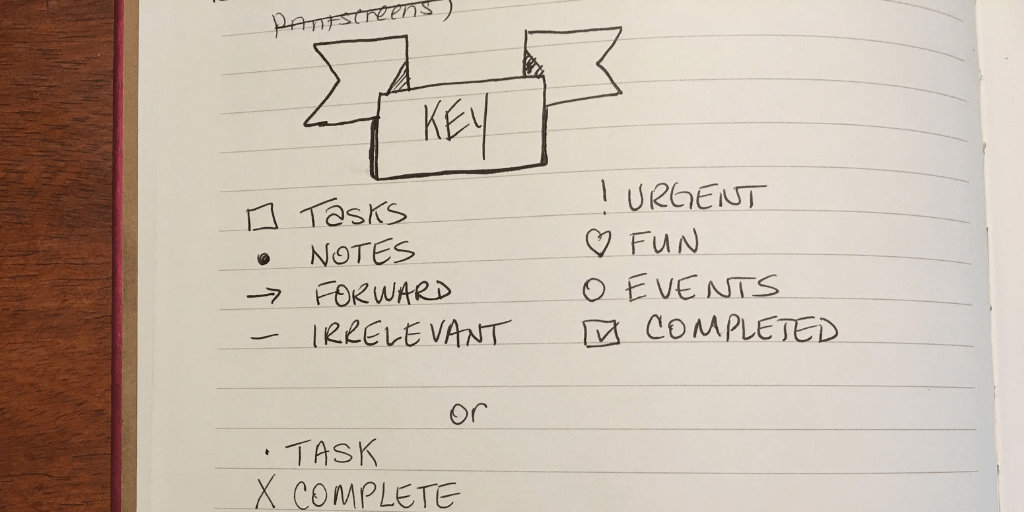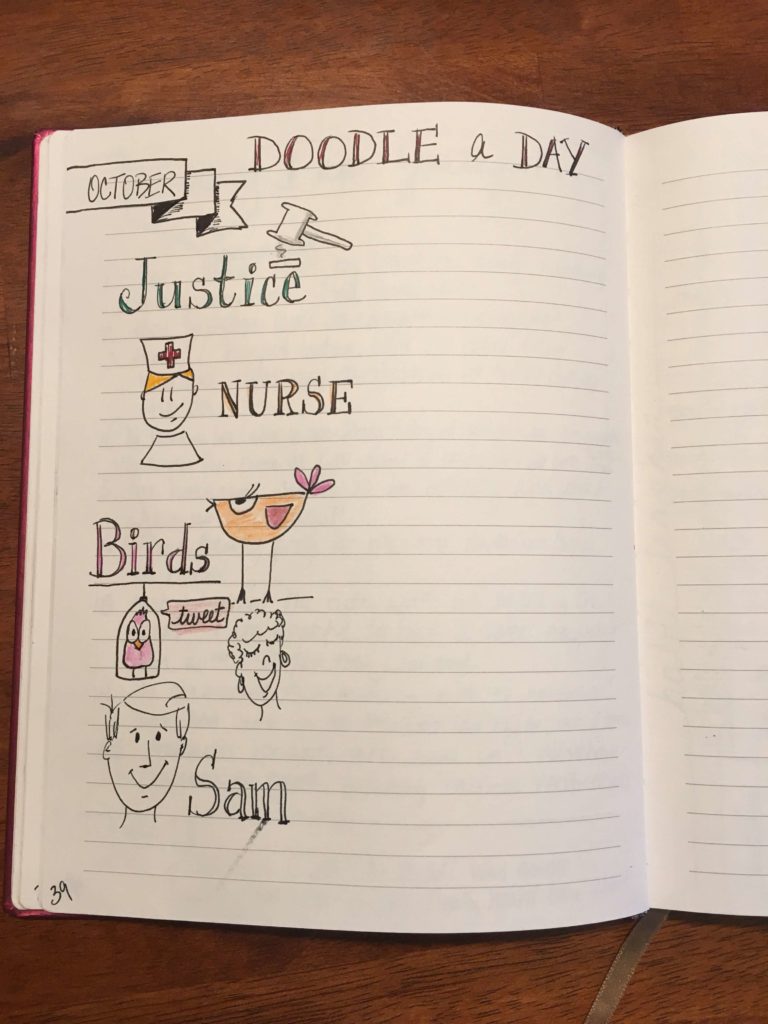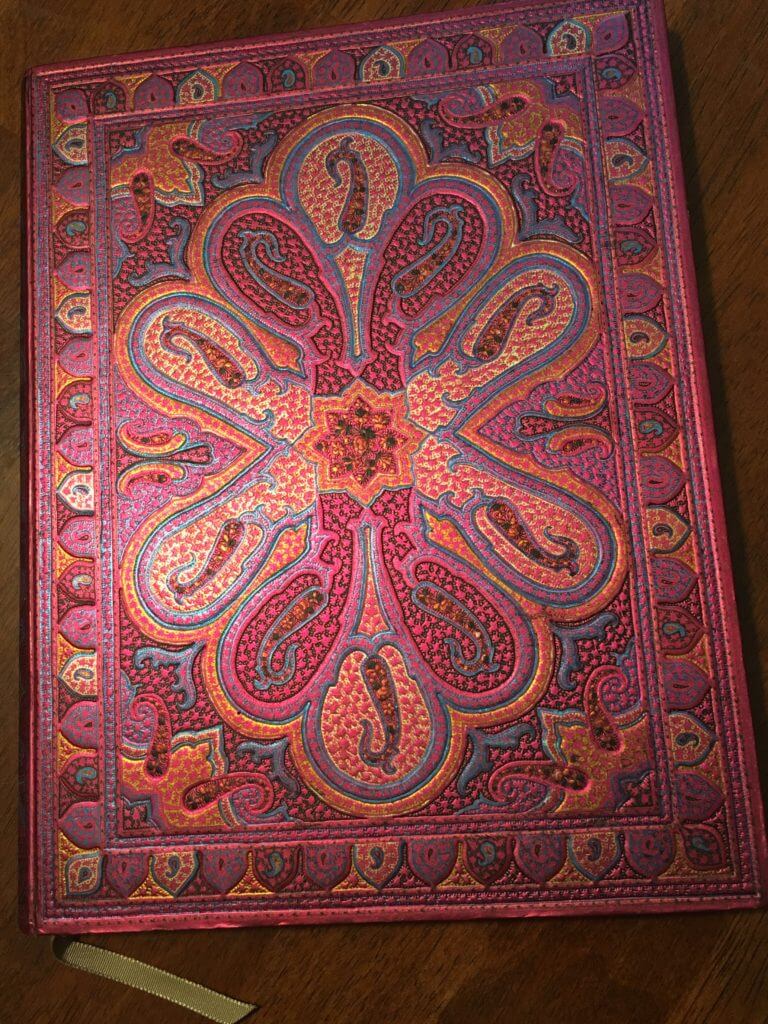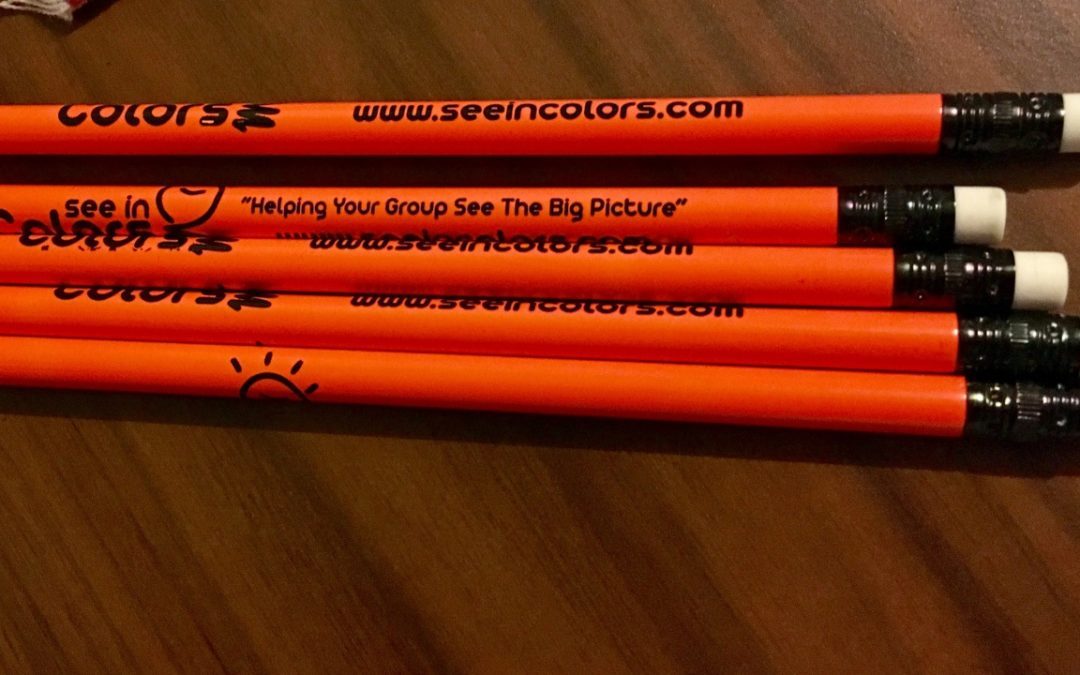
by Lisa | Feb 6, 2019 | Graphic Recording
Looking to make your notes a little bit more presentable and exciting? Sketchnotes are a great way to incorporate a fun and fresh take on meetings, client check-ins and more. You do not need to have top-notch drawing skills, just some creativity and eagerness to learn.
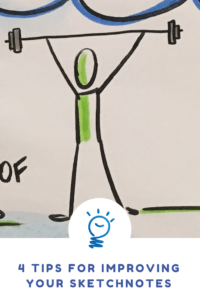
If you are wanting to use sketchnotes in your office or at the next conference you attend, check out our top four tips!
- Make sure you have the tools! While you don’t need to go overboard at the local craft store, having some supplies to get you started is key. We love using colorful markers like Tombow’s dual-brush option! A sketchpad is another item to invest in. Something simple will do, like this drawing pad we found on Amazon. A piece of computer paper also works if you are in a pinch!
- Try audio recording along with your sketchnotes. When you are first starting out with sketchnotes, you may feel frantic trying to get everything down at once. During your beginning stages or even if you are working on a new style of sketchnotes, audio record the presentation you are sketching. Having an audio recording to review can help you fill in any gaps of your visual and add to your initial sketch.
- Practice! Practice! Practice! Check out a Ted Talk or webinar you have been meaning to watch and test out your sketchnote skills! You can refine your style, practice your illustrations and catch up some must-watch videos. This will help you train your ability to retain the information shared along with drawing out key points.
- Check out some inspiration. Review other sketchnote creations online to get an idea of what style you want to create. Our website also has plenty of options to check out as well!
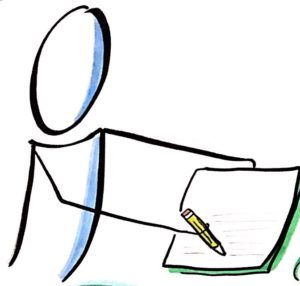
If you still need additional help with your sketchnote skills or would like to outsource visual note taking for an event, let us know! We would love to work with you!
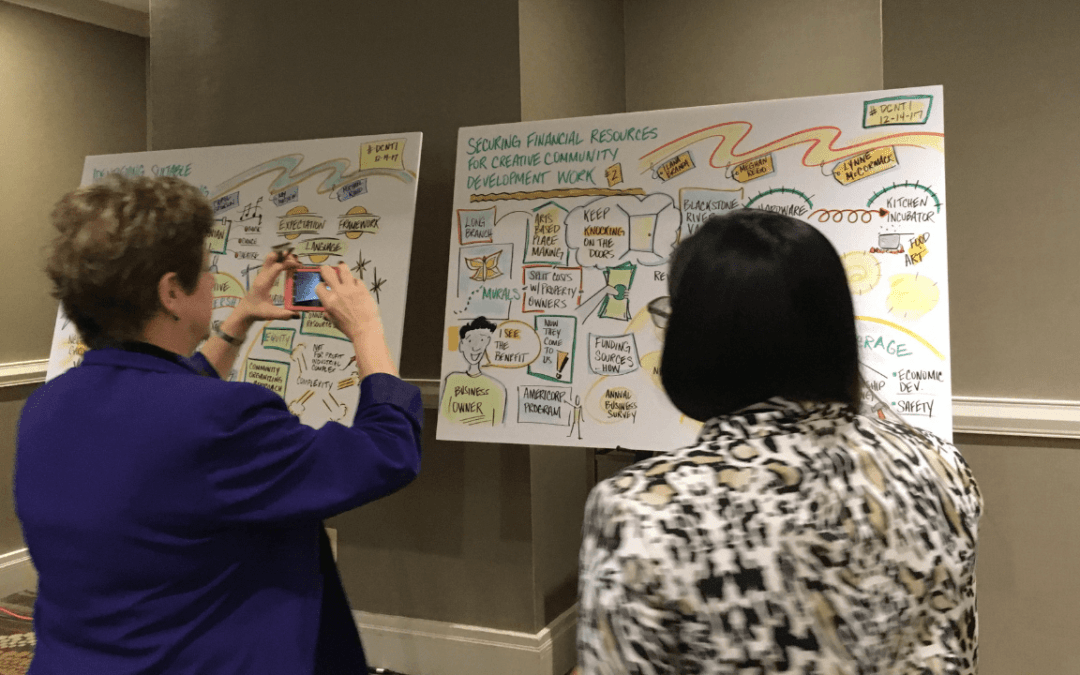
by Lisa | Dec 12, 2018 | Business, Graphic Recording
Planning a conference can be a tricky job to pull off. From scheduling speakers to finding space, you have a lot to plan. The list goes on and on. Not to mention, you have to make sure the conference is a success with participant engagement. Engaging with those who attend your conference is crucial! You want to ensure that they get a lot of value out of the event and be excited to attend the next one.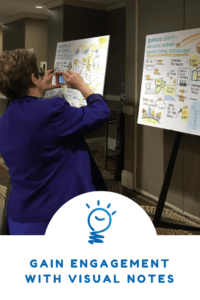 A conference has a lot of moving parts and attendees can easily get overwhelmed. They may have trouble navigating to the right rooms or struggle to select the best breakout session for their needs and interests. Attendees can experience a little bit of FOMO (fear of missing out) and have trouble choosing a single session when there are multiple that peak their interest. A creative solution to this worry and problem is to incorporate visual notes into your conference. Graphic recorders can be assigned to each space, taking notes and creating a fun visual to share with the group. While participants in specific sessions will enjoy the creative aspect of note taking, people who were unable to be in two places at once can reference the final graphic recording. Here’s an example of our team supporting the Arthur Page Society for their Communications Conference.
A conference has a lot of moving parts and attendees can easily get overwhelmed. They may have trouble navigating to the right rooms or struggle to select the best breakout session for their needs and interests. Attendees can experience a little bit of FOMO (fear of missing out) and have trouble choosing a single session when there are multiple that peak their interest. A creative solution to this worry and problem is to incorporate visual notes into your conference. Graphic recorders can be assigned to each space, taking notes and creating a fun visual to share with the group. While participants in specific sessions will enjoy the creative aspect of note taking, people who were unable to be in two places at once can reference the final graphic recording. Here’s an example of our team supporting the Arthur Page Society for their Communications Conference. Create a gallery wall in a common area of your conference to display all of the notes from each session. Attendees can take photos of the notes from the sessions and enjoy all of the benefits of the information even without being in the room during the original presentation. Post visual notes on social media as a way to share about the event. You can also distribute notes in a final printout when the day is over. This collection of visuals can provide a perfect takeaway for your event and help with signups for next year! Check out how one of our clients utilized graphic recording for their event HERE! Attendees loved taking photos and seeing the finished product!
Create a gallery wall in a common area of your conference to display all of the notes from each session. Attendees can take photos of the notes from the sessions and enjoy all of the benefits of the information even without being in the room during the original presentation. Post visual notes on social media as a way to share about the event. You can also distribute notes in a final printout when the day is over. This collection of visuals can provide a perfect takeaway for your event and help with signups for next year! Check out how one of our clients utilized graphic recording for their event HERE! Attendees loved taking photos and seeing the finished product! 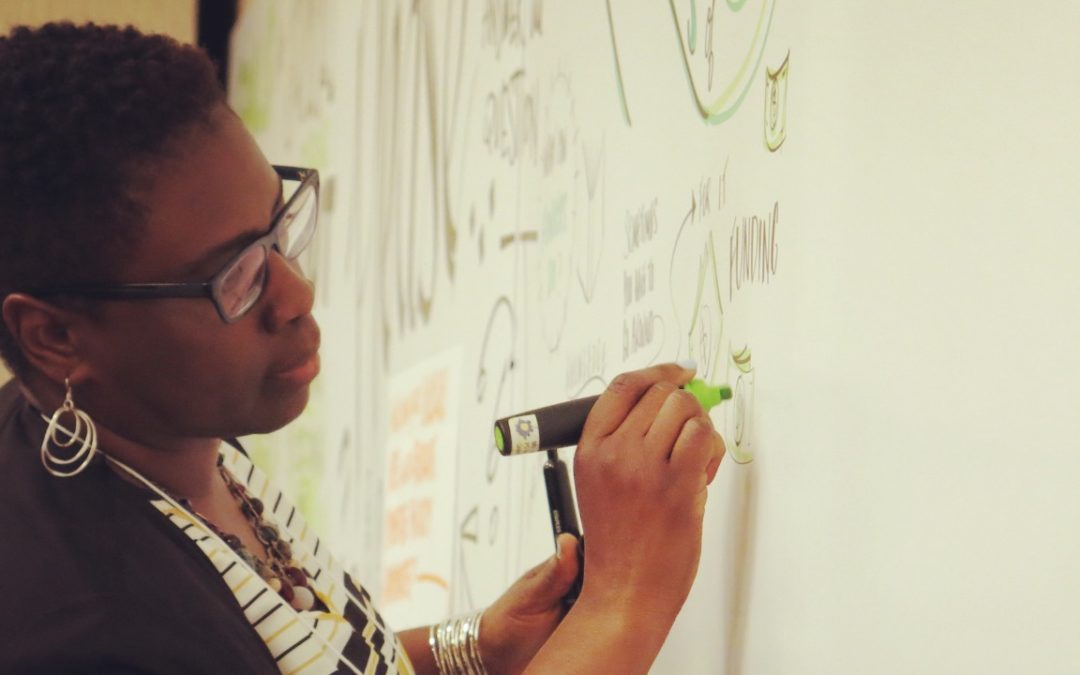
by Lisa | Nov 28, 2018 | Graphic Recording
The Job Title
As a graphic recorder, the job has multiple titles. Some call us scribes, others call us visual note takers or graphic facilitators. We go by a few different names! If you are not familiar with the field, you may think what we do is similar to an artist, but the job description is more than making art or drawing pictures. It expands beyond that simple idea. What we do has more to do with the ideas we are recording, than the “art” that we are creating.

The Job Description
While we may go by multiple titles, the job and work description is the same. Graphic recorders organize thoughts, ideas, and concepts in a creative way. While we may use similar mediums and tools of the trade as artists, the focus of our work is different. We collaborate with you to provide a service that brings a fresh perspective to your conference, meeting or event.
The Fun Part
During your meeting – we listen, synthesize, and draw throughout the presentation. Our creative form of note taking transforms your information into a visual representation of the content shared. We summarize ideas through hand-drawn pictures and text. You event can be so much more the usual PowerPoint slides! Color is always included along with a personal touch here and there from our team. We have worked with associations, non-profits, and government agencies and more to bring their content to life and inspire team members. We love serving clients no matter the size of their event, from smaller scale conference meetings to large-scale conferences. Audiences of all sizes can benefit from graphic recording!
If you are looking for a fresh and fun way to share your information with those around you, let us know! We would love to work with you and provide our services for your next event. Get a free quote today!
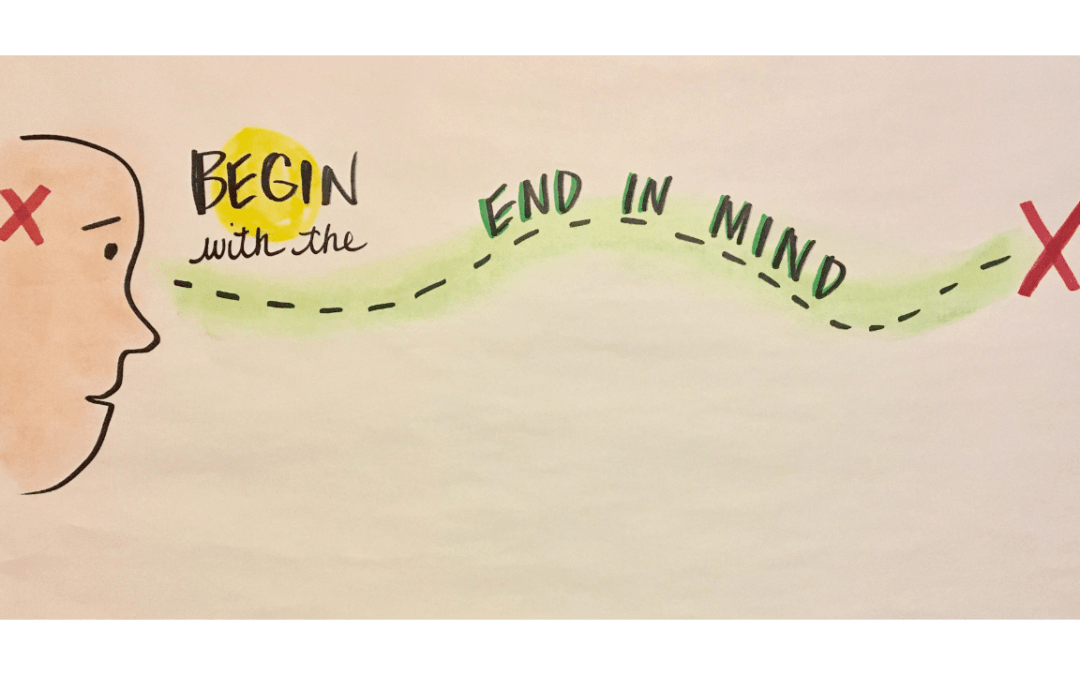
by Lisa | Nov 14, 2018 | Event Planning, Facilitation, Graphic Recording
Tired of boredom in the boardroom? Us too! Those company meetings do not have to be the same thing every time. There is nothing worse than losing your audience when you go over those numbers with the team. Sleeping supervisor in the corner? No more! We have some tips to help you keep your coworkers engaged throughout the meeting agenda!
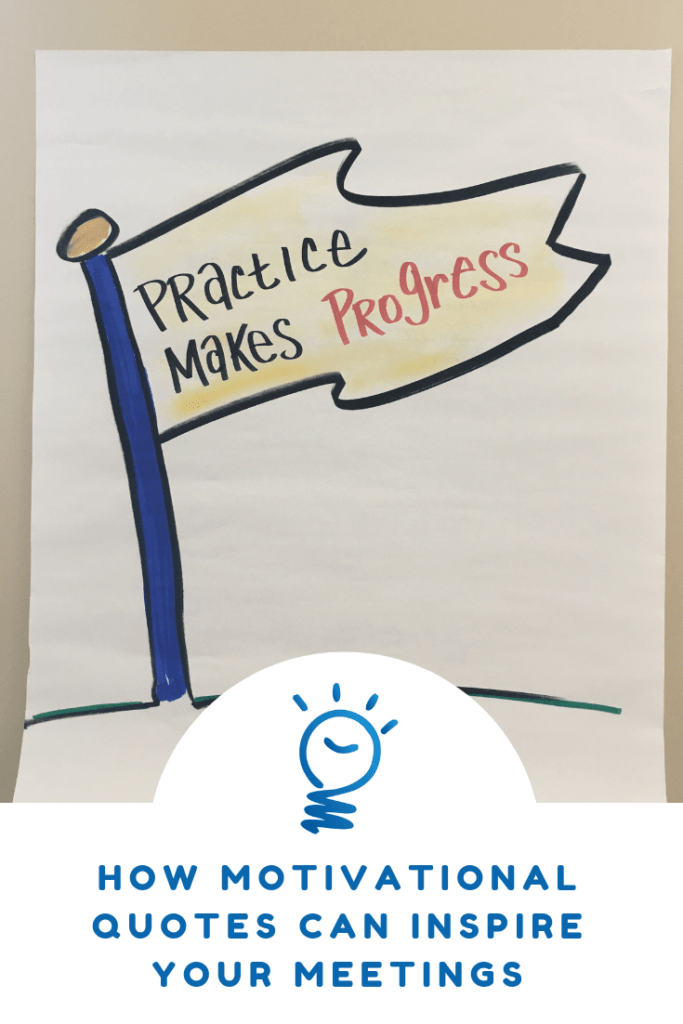
Bring back inspiration and participation to your meeting with motivational quotes! Transform the blank walls in your space with colorful quotes, one-liners and more. Use that blank space to your advantage. Prepare some quotes ahead of time for your presentation, using them as references throughout your discussion. Spark some new ideas, productivity and more with motivational quotes. Keep your quotes colorful. Neutral tones can be dull and fade into the background. You can use flip charts to draw your quotes and post them on the walls throughout the room. Space them out to help draw the eye in each spot of the meeting area.
Right away, your coworkers will notice a difference and be excited for what’s to come. The switch up of scenery can be just want your meeting needs for a renewed spirit in the workplace. This update can be the perfect solution to ease tension for large company planning meetings as well! Help get team members comfortable and excited to contribute to the meeting.
As you talk about these quotes, ask your participants to share what quote resonates the most with most. This feedback can help you with future presentations as well. If there is a certain type of quote, idea, theme that stands out the most – make a note of it. You will want to continue sharing items along those lines with each presentation or meeting.
Do you have a big meeting coming up? Let our team help prepare some visuals for your space. Get ready for a great time with your team thanks to motivational quotes! For additional help, be sure to download our free guide to a better workshop HERE!
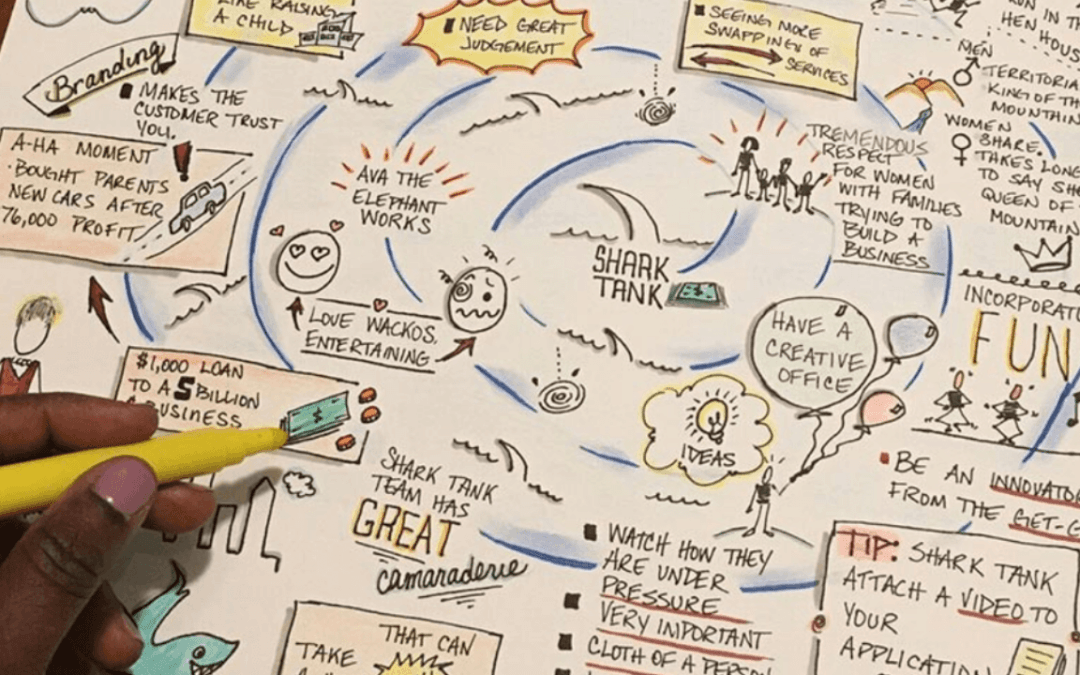
by Lisa | Oct 17, 2018 | Entrepreneur, Graphic Recording, Productivity
Encourage creativity and energize learning in your team with sketchnotes! This visual way of sharing information can be just what your company needs to jumpstart brainstorming. No more black and white handouts. Bring some color into the mix.
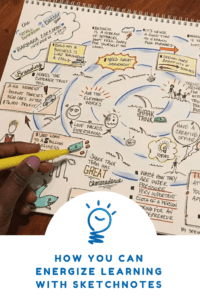
So what exactly are sketchnotes?
Sketchnotes are a very visual way of capturing information. Incorporating a mix of handwriting, doodles, lettering and more, sketchnotes are not your typical pen and paper note-taking. It is the visual design of verbal information, each “sketch” representing a piece of information.
There are two ways you can incorporate sketchnotes into your workplace. Check out our ideas below to see how to share these ideas in your office!
Help explain difficult concepts with sketchnotes. Create sketchnotes and pass them out to your audience. You can guide them throughout the visual during your presentation. Draw their eyes to specific portions of the sketchnote page in front of them. You can also show the sketchnotes on a screen, zooming in to different parts and walking your team through the information provided.
Long day in the conference room? Encourage your team to create their own sketchnotes. Get the team excited by introducing a new, interactive way to participate in meetings. Provide everyone with blank paper and materials. Markers, pencils, pens and more. Give them time at the start of your day to select their supplies before you get started. Provide a few sketchnote pointers and then allow them to create! As you share, watch them engage with their sketchnotes, getting down each piece of information in a fun, fresh way. Have each member share at the end of the presentation as well! Let them show off their creations.
Create your own cliffnotes. Reading through a business book? Writing your own novel? Use sketchnotes to create idea maps and follow along with plotlines. This visual can help with your ability to retain the information and remember clearly at a later date.
Need more tips? Download our FREE Visual Note-Taking Tip Sheet.
Learn the basics of sketchnoting and how you can implement this practice in your workplace through our services! Can’t wait to see what you create!
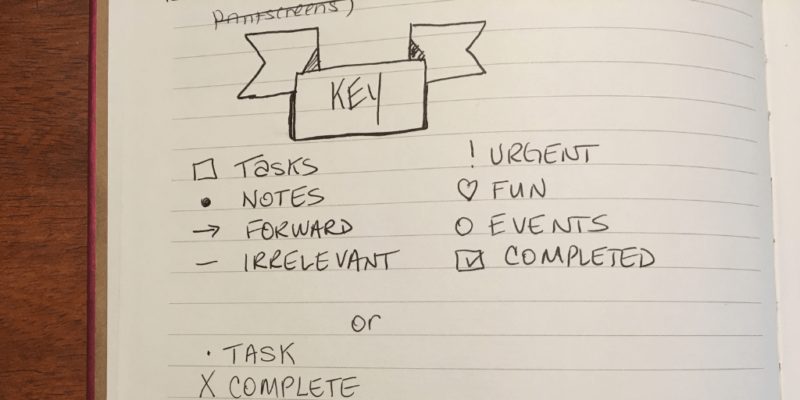
by Lisa | Oct 3, 2018 | Art, Entrepreneur, Graphic Recording, Productivity, Social Media
Bullet journaling has become a huge source of creativity and productivity for creatives across the world. Originally created by Ryder Carroll, this style of record keeping can be as simple or as complex as you need it to be.
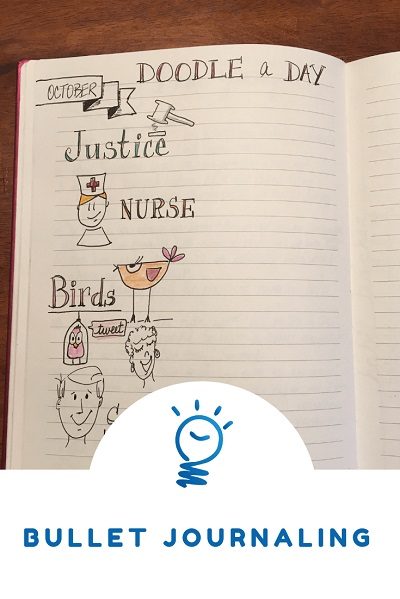
In this day and age, it can be hard to keep track of everything in one place. Even with technology, it can be hard to get everything down. Pen and paper can be the way to go. A bullet journal provides a way for you to be organized in a creative way. From tracking your water intake, keeping up with tasks to dreaming big with a bucket list, your bullet journal can hold as much information as you like.
Bullet journals can be a gamechanger in the workplace. Take a break from your technology and use your bullet journal to plan strategically, organize your thoughts and keep track of your calendar. Bullet journals can provide a full visual and creative freedom that computer screens would limit. This style of note taking can also liven up meetings as well. Repetitive operational meetings can get boring, but by adding notes to your bullet journal it can boosts creativity during those long days in the boardroom.
Getting started with your bullet journal:
- Find your journal – Decide if you want lined or blank paper, dotted versus gridded, etc. You can get a large journal or start smaller. The key to bullet journaling is customizing it to your needs.
- Figure out your topics – What do you want to include in your bullet journal? Consider creating a brain dump page before you get started. *Important note – make sure to skip a few pages at the beginning of your journal to leave room for your index.
- Create your index – Consider your index your “table of contents” for your bullet journal. This will serve as your guide for finding specific information in the future. This portion will be extremely helpful once your bullet journal becomes full of your notes. Also, make sure to number your pages to keep with completing your index.
- Design your key – Your key will have various indicators for your task lists. A simple dash “-” can serve as a general indicator of a task, while other symbols should be designed for different categories for your tasks. Design markings for tasks once you have completed them, moved to a different date or canceled altogether. This can evolve over time, but having a general guide is helpful.
- Make it your own – Having an initial setup of pages and topics is great to get you started, but the main purpose of bullet journaling is making it your own. Search online for inspiration. Get ideas for layouts, content and more. Be sure to add some fun icons to your bullet journal with our visual note taking sheet!
Need some more inspiration? See photos of my journal below. Can’t wait to see what you create!
